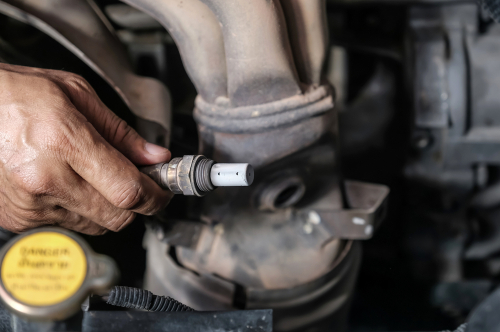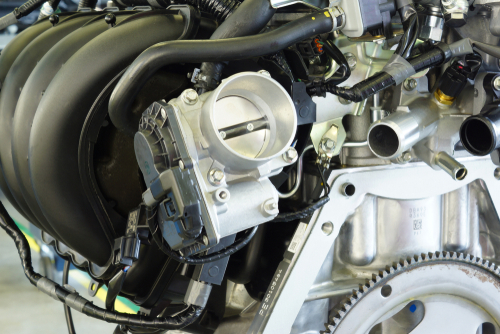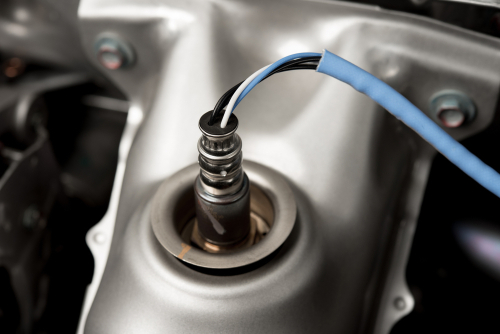Ever wondered what that pesky P0031 code on your car’s dashboard means? It’s not just a random string of numbers and letters – it’s your vehicle’s way of saying, “Hey, we’ve got a problem with the oxygen sensor heater!”

The P0031 code indicates a low voltage issue in the heated oxygen sensor (HO2S) control circuit for Bank 1 Sensor 1. This sensor plays a crucial role in monitoring your engine’s exhaust gases and helping maintain optimal fuel efficiency.
When it’s not working properly, your car might start acting up in ways you’d never expect.
Don’t worry, though – you’re not alone in this automotive adventure. Many drivers face this issue, and with a bit of knowledge, you can tackle it head-on.
Let’s dive into the world of oxygen sensors, heater circuits, and why your car might be feeling a bit under the weather.
By the end of this article, you’ll be equipped to handle this common diagnostic trouble code like a pro.
Key Takeaways
- P0031 indicates a problem with the oxygen sensor heater circuit in your vehicle
- Symptoms may include decreased fuel efficiency and engine performance issues
- Proper diagnosis and timely repair can prevent more serious engine damage
Understanding the Code P0031
Hey there, fellow gearhead! Let’s crack open the mystery of P0031. This pesky little code is all about your car’s oxygen sensor – you know, that fancy gizmo that sniffs your exhaust.
P0031 stands for “HO2S Heater Control Circuit Low (Bank 1 Sensor 1)“. Sounds like a mouthful, right? Don’t worry, we’ll break it down.
HO2S? That’s just mechanic-speak for “Heated Oxygen Sensor”. Your car’s brain, the Engine Control Module (ECM), uses this sensor to keep your engine running smoothly.
Now, “Bank 1 Sensor 1” is just telling you which sensor is throwing a fit. It’s the first sensor on the side of the engine with cylinder number one. Easy peasy!
The “Circuit Low” part? That’s where things get interesting. It means the heater in your oxygen sensor isn’t getting enough juice. Without proper heating, your sensor might as well be taking a nap on the job!
Your ECM doesn’t like lazy sensors, so it lights up your dashboard like a Christmas tree with this Diagnostic Trouble Code. It’s your car’s way of saying, “Hey buddy, we’ve got a problem here!”
Root Causes of P0031

Alright, buckle up, because we’re about to dive into the nitty-gritty of what’s causing your P0031 code. You might think it’s all Greek to you, but don’t worry – we’ll break it down so even your grandma could understand it.
Faulty Oxygen Sensor
You know that little gizmo in your exhaust system that’s supposed to keep your engine running smoothly? Well, sometimes it gets a bit lazy. A faulty oxygen sensor is often the culprit behind the P0031 code.
When this sensor decides to take a vacation, it can’t heat up properly. That means it’s not giving your engine control module the info it needs. It’s like trying to bake a cake without knowing the oven temperature – you’re bound to end up with a mess.
Over time, these sensors can wear out or get contaminated. It’s not their fault, really. They’re working in a pretty harsh environment, after all. Imagine if your office was inside your car’s exhaust – you’d probably need a vacation too!
Wiring Issues
Now, let’s talk about the unsung heroes of your car’s electrical system – the wires. These little guys have a tough job, and sometimes they just can’t take the heat (literally).
Wiring issues can be a real pain in the tailpipe when it comes to P0031. You might have frayed wires, corroded connections, or even a short circuit. It’s like trying to make a phone call with a spaghetti noodle – the message just isn’t getting through.
Take a look at the wiring harness connected to your oxygen sensor. If it looks like it’s been through a war, you might have found your problem. And don’t forget to check the fuse box – a blown fuse could be the reason your sensor’s heater circuit is feeling a bit chilly.
Symptoms and Detection

Spotting the signs of a P0031 code can be tricky, but with a keen eye and the right tools, you’ll be a diagnostic wizard in no time. Let’s dive into how you can recognize the symptoms and use your trusty OBD-II scanner to pinpoint this pesky problem.
Recognizing Symptoms
You might notice your car acting a bit funky when the P0031 code is lurking. The Check Engine Light will likely be your first clue, glowing like a miniature sun on your dashboard. But that’s not all, folks!
Your engine might start performing like it’s had one too many oil martinis. You could experience:
- Rough idling (it’s not supposed to feel like a massage chair)
- Poor fuel economy (suddenly your wallet feels lighter)
- Hesitation during acceleration (0 to 60 in… eventually)
These symptoms occur because your air-fuel ratio is off-kilter. It’s like trying to bake a cake with too much flour – things just don’t turn out right.
Using an OBD-II Scanner
Now, let’s talk about your new best friend: the OBD-II scanner. This nifty gadget is like a crystal ball for your car, revealing the secrets hidden in its electronic brain.
To use it:
- Locate your car’s OBD-II port (usually under the dash)
- Plug in the scanner
- Turn on the ignition (but don’t start the engine)
- Follow the scanner’s instructions to read the codes
When you see P0031 pop up, you’ll know you’ve hit the jackpot. But don’t celebrate yet – this trouble code is just the beginning of your detective work.
Remember, the scanner is just a tool. It’s your automotive know-how that’ll solve the case of the misbehaving engine. So put on your mechanic’s hat and get ready to dive under the hood!
Fixing the Issue
Got a P0031 code lighting up your dash? Don’t sweat it! We’ll walk you through the steps to get your ride purring again. It’s not as daunting as it sounds, trust me.
Replacing the Oxygen Sensor
First things first, you might need to swap out that oxygen sensor. It’s like changing a light bulb, but for your car’s exhaust system.
Start by locating the pesky sensor – it’s usually near the engine, poking out of the exhaust pipe. You’ll need a special oxygen sensor socket to unscrew it. Don’t try to MacGyver it with regular tools!
Once you’ve got the old sensor out, compare it to the new one. They should look like twins. Screw in the new sensor, but don’t hulk out on it – snug is good enough.
Remember to clear those codes after installation. Your car’s computer needs a fresh start, just like you after a bad hair day.
Addressing Electrical Concerns
If replacing the sensor didn’t do the trick, you might be dealing with some wiring gremlins. Time to put on your detective hat!
Start with a visual inspection of the wiring. Look for any signs of damage, like frayed wires or melted connectors. It’s like looking for a needle in a haystack, but with more grease.
Check the connections at the sensor and the engine control module. Loose connections can cause all sorts of mischief. Give them a gentle wiggle – if they’re loose, tighten them up.
If you’re handy with a multimeter, test the heater control circuit. You’re looking for proper voltage and resistance. It’s like taking your car’s electrical pulse.
Preventing P0031 in the Future
Keeping your car’s oxygen sensor system in tip-top shape isn’t rocket science, but it does require a bit of TLC. Let’s dive into some ways you can avoid that pesky P0031 code from popping up again.
Regular Maintenance
You know how your dentist always nags you about flossing? Well, consider this your friendly reminder to give your car’s oxygen sensors some love.
These little guys work hard, and they need your help to keep chugging along.
First things first, keep an eye on your engine oil. Dirty oil can gunk up your sensors faster than you can say “check engine light.” Change it regularly, and your O2 sensors will thank you.
Next up, don’t skimp on the fuel quality. Your sensors are like refined gourmets – they prefer the good stuff. Using low-quality fuel is like feeding a five-star chef fast food. It just won’t end well.
Early Detection Tips
Now, let’s talk about catching problems before they turn into full-blown P0031 nightmares.
Your car might be trying to tell you something’s up, so listen closely!
Keep your ears peeled for any unusual engine noises.
If your car starts sounding like a grumpy old man, it might be time for a check-up.
Watch out for decreased fuel efficiency too.
If you’re suddenly best buds with the gas station attendant, your oxygen sensors might be crying for help.
Lastly, don’t ignore that check engine light.
It’s not just there for decoration, you know.
If it starts flashing at you, take your car to a mechanic pronto. Better safe than sorry!
Frequently Asked Questions
Dealing with a P0031 code can be as frustrating as trying to open a pickle jar with greasy hands. Let’s tackle some common head-scratchers about this pesky problem.
What are the common symptoms when you’ve got a P0031 code playing the blues under your hood?
When P0031 decides to crash your car party, you might notice your engine light doing its best impression of a Christmas tree.
Your fuel economy could take a nosedive faster than a seagull spotting a dropped french fry.
You might also feel your ride hesitating more than a teenager asked to clean their room.
Poor acceleration is another telltale sign that something’s amiss in oxygen sensor land.
Can a P0031 code cause my car to act like a moody teenager that refuses to start in the morning?
While a P0031 code isn’t usually the drama queen that prevents your car from starting, it can make your morning commute about as smooth as a cobblestone road.
Your engine might sputter and stall like it’s auditioning for a B-grade horror flick.
In severe cases, you could find yourself having trouble starting the engine, especially when it’s colder than a polar bear’s toenails outside.
If my trusty ride throws a P0031 code, is it safe to drive or should I park it like it’s hot until it’s fixed?
Driving with a P0031 code is like wearing socks with sandals – you can do it, but should you?
While it’s not typically an immediate “abandon ship” situation, it’s best to get it checked out sooner than later.
Continuing to drive could lead to reduced fuel efficiency and potential damage to your catalytic converter. That’s a repair bill you don’t want to see.
What wizardry is involved in fixing a P0031 code without breaking the bank or my spirit?
Fixing a P0031 code doesn’t require a degree in rocket science, but it might test your patience.
First, you’ll want to check the wiring and connections to the oxygen sensor. They can be more temperamental than a cat in a bathtub.
If the wiring checks out, you might need to replace the oxygen sensor.
It’s not the cheapest part, but it’s better than letting the problem snowball into bigger issues.
How do I track down the elusive Bank 1 Sensor 1 without going on an automotive treasure hunt?
Finding Bank 1 Sensor 1 is like a game of “Where’s Waldo?” but with more grease.
Generally, it’s located before the catalytic converter on the engine’s Bank 1 side.
On most engines, Bank 1 is the side with cylinder number one. If you’re still stumped, your vehicle’s manual might have a map to this hidden treasure.
Could fixing a P0031 code be a DIY weekend tango, or is it a job for the pros with the fancy tools?
For the mechanically inclined, fixing a P0031 code can be a DIY adventure.
If you’re comfortable wielding a multimeter and aren’t afraid of a little grime, you might save yourself a trip to the mechanic.
However, if your toolbox is more suited for assembling IKEA furniture, it might be best to leave it to the pros.
They have the diagnostic tools and expertise to pinpoint the issue faster than you can say “check engine light.”
